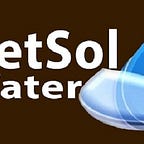How Effective Are Water Treatment Plants?
As the population and development activities increase, surface and groundwater become increasingly polluted. Pollution has resulted in the entry of dangerous chemicals and hazardous compounds into the water system. Water from rivers, reservoirs, and lakes is no longer safe to drink because it includes microorganisms, diseases, and other toxins that are harmful to humans, plants, and animals.
The situation of unhealthy and unsafe surface water is the reason for the need of the Water Treatment Plant.
Water Treatment Plant- The saviour of water!
To live a healthy life, you must only drink pure water. However, potable water, or drinking water, is not accessible everywhere on the planet.
Every year, many individuals die as a result of drinking polluted water. Water treatment is the process of enhancing water quality by subjecting it to various procedures. It comprises the elimination of suspended particles and other dangerous compounds so that they may be used or reintroduced into the ecological system.
Essential Technologies of Water Treatment Plant
1. Screens
Many surface water intakes employ screens to separate particle matter and trash from raw water. Coarse screens can extract weeds and trash, whilst band screens and micro strainers may remove tiny particles such as fish. Micro strainers are used as a pre-treatment before coagulation or subsequent filtering to minimize solids loading.
2. Gravel filtration
Gravel filters, which consist of a rectangular channel or a tank separated into sections and filled with graded gravel, may eliminate turbidity and algae (size range 4 to 30mm). An intake distribution chamber allows raw water to enter and move horizontally through the tank, first meeting coarse gravel and subsequently finer gravel. The filtered water is collected in an exit chamber, while the solids eliminated from the raw water accumulate on the filter’s floor.
3. Slow-moving sand filters
Slow sand filters may also eliminate turbidity, algae, and microbes. Slow sand filtration is a simple and dependable procedure that is typically suited for the treatment of minor supplies if enough land is available.
4. activated carbon
Contaminants can be extracted by using activated carbon and physical adsorption. The amount and kind of carbon, the nature and concentration of the pollutant, the retention period of water in the unit, and overall water quality will all have an impact on this (temperature, pH, etc.).
5. Aeration
Aeration is used to provide oxygen in to the water while also removing gases and volatile substances by air stripping.
6. Membrane procedures
• Reverse osmosis (RO),
• Ultrafiltration (UF),
• Microfiltration (MF),
• Nanofiltration (NF).
Membranes, which were formerly employed to generate water for industrial or medical purposes, are now utilized to clean drinking water. Membrane mechanisms can eliminate harmful bacteria, Cryptosporidium, Giardia, and perhaps human viruses and bacteriophages.
How effective are water treatment plants?
- It is critical to safeguard one’s health- The poisonous chemicals, metals, and other toxins found in water are hazardous to the health of humans and other living species on the earth. These dangerous compounds and pollutants cause asthma, cholera, diarrhea, asthma, cancer, skin issues, and even death. As a result, the yearly fatality rate from drinking polluted water will be lowered.
- It aids in the conservation of water — Wastewater treatment facilities utilize water discharged from households and industry, which is cleansed and returned to the community and natural environment. As a result, it decreases water waste.
- To safeguard the environment- Water treatment is extremely beneficial to the environment. It helps in contributing to the water cycle’s equilibrium by preserving groundwater and surface water.
Water cleaned at treatment facilities may be utilized for a variety of reasons, including drinking, domestic usage, industrial applications, agricultural, and irrigation, among others. This will address the issue of water scarcity, and nations with restricted access to safe water will profit.
Conclusion
Nowadays, pollution is a major concern, and water pollution is India’s most serious problem. We, Netsol Water Solution, are attempting to develop a water filtration system that will assist in overcoming the challenge that our community is experiencing.
To contact Netsol Water Solutions, call on +91 9650608473 or send an email to enquiry@netsolwater.com
